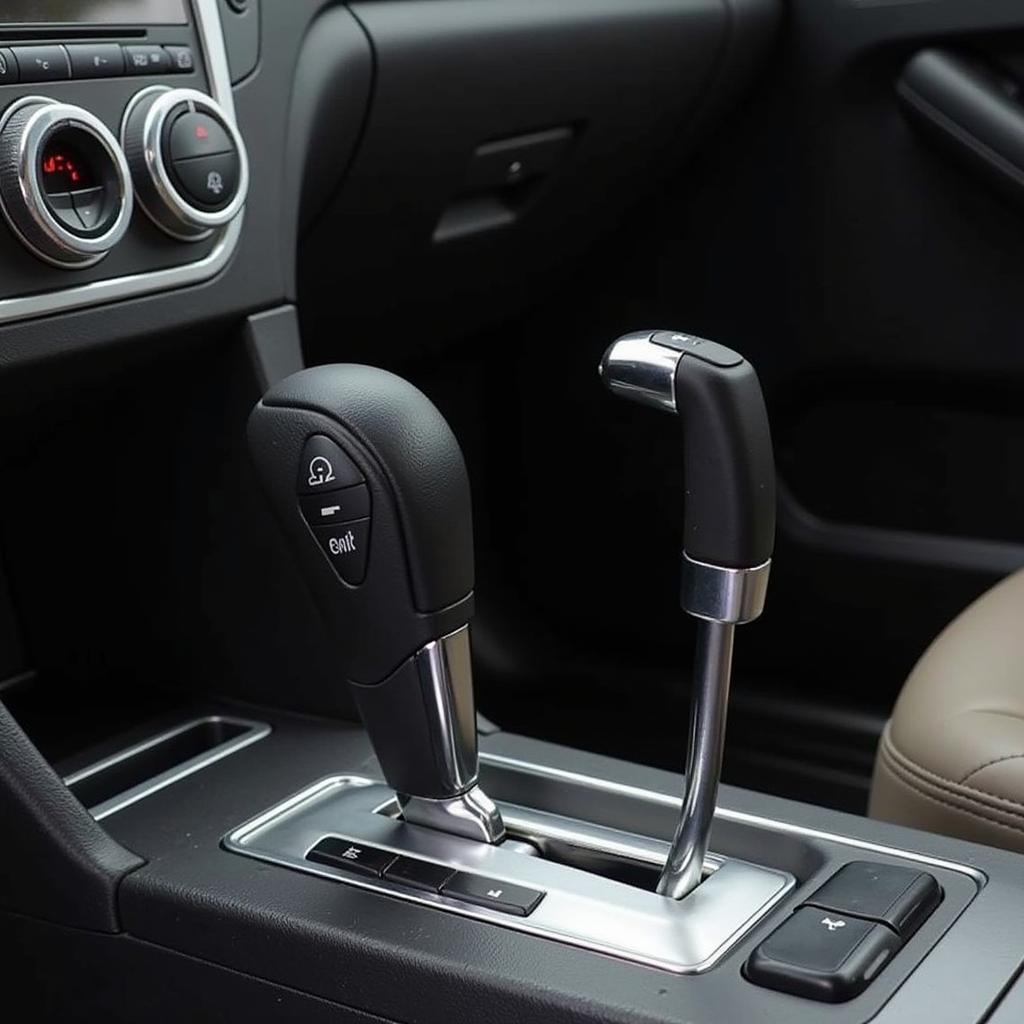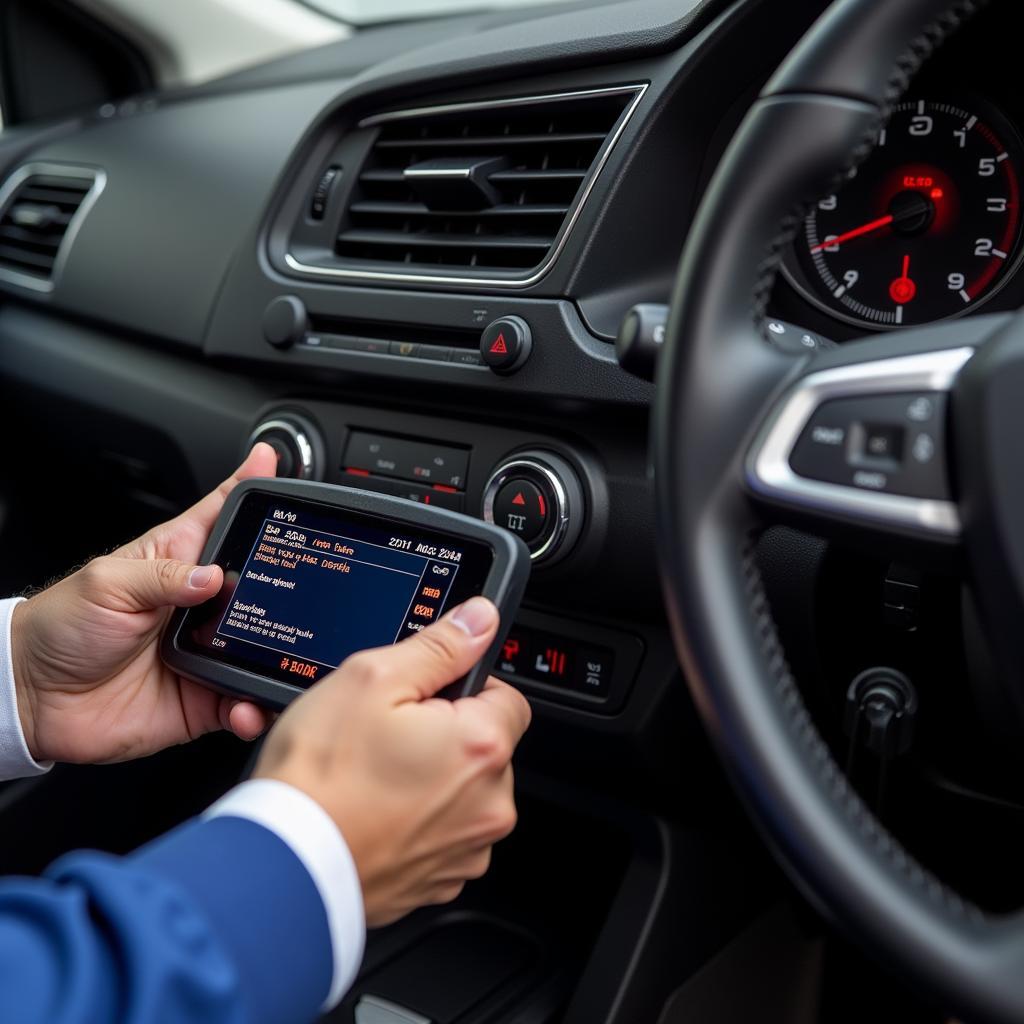The brake warning light on your dashboard is a crucial safety feature. When it illuminates on your 2011 Subaru Outback, it signals a potential issue within your braking system that requires immediate attention. Ignoring this warning could compromise your ability to brake effectively, putting you and your passengers at risk. This comprehensive guide delves into the common causes behind a 2011 Subaru Outback brake warning light and provides potential solutions to get you back on the road safely.
Understanding Your Subaru Outback’s Brake System
Before we dive into the causes, it’s helpful to have a basic understanding of your Subaru Outback’s braking system. This system is designed with redundancy to ensure stopping power even if a component fails. It consists of several key components:
- Hydraulic System: This system uses brake fluid to transmit force from the brake pedal to the wheels.
- Brake Pads and Rotors: When you press the brake pedal, these components create friction to slow down the vehicle.
- Brake Calipers: The calipers house the brake pads and push them against the rotors.
- Parking Brake: This mechanical system engages the rear brakes to keep your vehicle stationary when parked.
- Anti-lock Braking System (ABS): The ABS prevents wheel lock-up during hard braking, maintaining steering control.
- Electronic Brake-force Distribution (EBD): Working in conjunction with ABS, EBD balances braking force between the front and rear wheels for optimal stopping power.
Common Causes of a 2011 Subaru Outback Brake Warning Light
The brake warning light on your Outback can illuminate for various reasons. Let’s explore some of the most common culprits:
1. Low Brake Fluid Level
This is often the most straightforward cause. Brake fluid is the lifeblood of your braking system, transmitting the force needed to stop your car. If the fluid level is low, it can indicate a leak or worn brake pads.
Solution: Check your brake fluid reservoir. If the level is below the minimum mark, add the recommended brake fluid for your Outback. If the light persists or the level drops again quickly, have a mechanic inspect your brake lines and components for leaks.
2. Worn Brake Pads
Brake pads are designed to wear down over time. As you brake, friction between the pads and rotors generates heat, gradually eroding the pad material.
Solution: If your brake pads are nearing the end of their service life, you’ll likely experience a high-pitched squealing sound when braking. Have a mechanic inspect your pads and replace them if necessary.
3. Faulty Brake Caliper
The brake caliper plays a crucial role in pushing the brake pads against the rotors. A sticking or seized caliper can cause uneven brake pad wear, reduced braking performance, and even pull your car to one side.
Solution: Diagnosing a faulty caliper often requires a mechanic’s expertise. They will inspect the calipers for signs of sticking, leaking, or damage.
4. ABS Sensor Issues
Your Subaru Outback relies on ABS sensors to monitor wheel speed and prevent wheel lock-up during braking. If a sensor malfunctions or becomes covered in debris, it can trigger the brake warning light.
Solution: A mechanic can use a diagnostic scanner to check for ABS sensor fault codes. Depending on the issue, cleaning or replacing the sensor might be necessary.
5. Brake Master Cylinder Malfunction
The brake master cylinder is the heart of your hydraulic braking system. It generates the pressure needed to force brake fluid through the lines and to the calipers. If the master cylinder fails, you may experience a soft or spongy brake pedal, reduced braking power, or even complete brake failure.
Solution: A failing brake master cylinder requires immediate attention from a qualified mechanic. They will diagnose the issue and recommend repair or replacement.
6. Parking Brake Engaged
While this may seem obvious, it’s easy to overlook. If the parking brake is even slightly engaged, it can trigger the brake warning light.
Solution: Ensure the parking brake is fully disengaged. If the light remains on, inspect the parking brake cable for any adjustments or damage.
 Engaged Parking Brake in Subaru Outback
Engaged Parking Brake in Subaru Outback
What to Do When Your Brake Warning Light Turns On
If your brake warning light comes on, it’s crucial to take immediate action:
- Pull over safely: As soon as it’s safe, pull your Outback off the road and away from traffic.
- Check your parking brake: Make sure it’s fully disengaged.
- Assess your brakes: Carefully test your brakes to gauge their responsiveness. Do they feel spongy, or is the pedal travel excessive?
- Check your brake fluid: If it’s safe to do so, inspect the brake fluid reservoir. If the level is low, add brake fluid if you have some on hand.
- Seek professional help: If the light persists, your brakes feel unusual, or you suspect a serious issue, don’t hesitate to contact a qualified mechanic or your local Subaru dealership.
Preventative Maintenance for a Healthy Braking System
Regular maintenance is the key to preventing brake system issues and ensuring your safety on the road. Here are some preventative measures:
- Regular Brake Inspections: Have your brakes inspected by a qualified mechanic at least once a year or every 12,000 miles, whichever comes first.
- Brake Fluid Flush: Subaru recommends flushing your brake fluid every 30,000 miles or every 24 months to prevent corrosion and maintain optimal performance.
- Listen for Unusual Noises: Pay attention to any unusual noises emanating from your brakes, such as squealing, grinding, or clicking. These sounds can indicate potential problems that require attention.
- Be Aware of Changes in Brake Pedal Feel: A spongy brake pedal, a pedal that goes too far down, or vibrations felt through the pedal can all signal issues within your braking system.
Addressing “P0420 Subaru Outback 2011 Turning Brake Warning Light”
Some Subaru Outback owners have reported a specific scenario where the brake warning light illuminates alongside a “P0420” engine code, especially after turning. This code typically indicates a problem with the catalytic converter system’s efficiency.
While a faulty catalytic converter itself wouldn’t directly trigger the brake warning light, there’s a potential connection. The P0420 code can sometimes be a symptom of a failing oxygen sensor. If this sensor sends incorrect readings to the engine control unit (ECU), it might indirectly affect other systems, potentially triggering the brake warning light as a precautionary measure.
Solution: If you’re experiencing both a brake warning light and a P0420 code, it’s crucial to have a qualified mechanic diagnose the issue. They can pinpoint the root cause, whether it’s a faulty oxygen sensor, a failing catalytic converter, or another underlying problem. For more information on how a P0420 code might relate to your brake warning light, refer to this resource: p0420 subaru outback 2011 turning brake warning light.
Conclusion
Your Subaru Outback’s brake warning light serves as a critical safety indicator. Understanding its potential causes empowers you to take prompt action and ensure your safety and the well-being of your passengers. Regular maintenance, timely inspections, and addressing any warning signs head-on can help prevent costly repairs and keep your Outback braking reliably for miles to come. Remember, when it comes to brakes, erring on the side of caution is always the safest approach.

